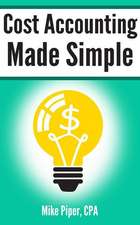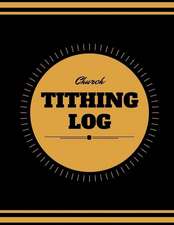Using National Data Bases in Educational Research
Editat de Thomas L. Hiltonen Limba Engleză Paperback – 17 oct 2016
* What variables are present in each of the major national data bases?
* What are the problems and dangers in making comparisons across data bases?
* What factors invalidate comparisons of test scores across data bases?
* In what ways can data from certain data bases be physically merged with data from other data bases?
This text clearly demonstrates what can be done with large national data bases and, perhaps equally important, what cannot be done -- or done only if certain precautions are taken.
Preț: 81.65 lei
Preț vechi: 95.15 lei
-14% Nou
Puncte Express: 122
Preț estimativ în valută:
15.62€ • 16.35$ • 13.00£
15.62€ • 16.35$ • 13.00£
Carte tipărită la comandă
Livrare economică 31 martie-14 aprilie
Preluare comenzi: 021 569.72.76
Specificații
ISBN-13: 9781138986633
ISBN-10: 1138986631
Pagini: 316
Dimensiuni: 156 x 234 mm
Greutate: 0.45 kg
Ediția:1
Editura: Taylor & Francis
Colecția Routledge
Locul publicării:Oxford, United Kingdom
ISBN-10: 1138986631
Pagini: 316
Dimensiuni: 156 x 234 mm
Greutate: 0.45 kg
Ediția:1
Editura: Taylor & Francis
Colecția Routledge
Locul publicării:Oxford, United Kingdom
Public țintă
ProfessionalCuprins
Contents: Preface. T.L. Hilton, Introduction. T.L. Hilton, General Problems in Using Results from Two or More Data Bases. W.B. Schrader, T.L. Hilton, Pooling Questionnaire and Test Data from Three National Surveys: An Example Involving Project TALENT, the Coleman Study, and NLS. A.E. Beaton, T.L. Hilton, W.B. Schrader, Equating Test Results from Two National Surveys: A Study of the SAT Score Decline. T.L. Hilton, W.B. Schrader, A.E. Beaton, Merging Data from Three Data Bases with Common Members: An Example Involving SAT Scores, ASVAB Scores, and HS&B Data. T.L. Hilton, Pooling Results from Two National Surveys: A Study of National Trends in Spatial-Visual Ability. S.S. Swinton, Estimating Ability in the College-Bound Population from a Self-Selected Sample. S. Urahn, Aggregating Data from Two Testings of the Same Cohort: Do NAEP Means Predict Later SAT Means for the Same Cohort of Students? T.L. Hilton, Pooling Results from Two Cohorts Taking Similar Tests, Part I: Dimensions of Similarity. D.A. Rock, Pooling Results from Two Cohorts Taking Similar Tests, Part II: Factor Structure and IRT Equating. T.L. Hilton, J. Pollack, Estimating Change in Enrollments from Two National Surveys Eight Years Apart. T.L. Hilton, Merging Data from Two Data Bases Without Common Members -- A Proposal. V.E. Lee, Pooling Data from Two Longitudinal Cohorts: Some Problems and Solutions. W.W. Turnbull, Drawing Educational Implications from Multiple Data Bases. T.L. Hilton, Summary and Conclusions. Appendix: Description and Directions for Obtaining Copies of Selected National Data Bases.
Recenzii
"...a useful record of what is going on in the USA and is of relevance to researchers in education."
—The Statistician
"...will aid researchers in the planning and design stage of research projects as it describes what may be accomplished through the use of national longitudinal and cross-sectional data."
—Contemporary Psychology
—The Statistician
"...will aid researchers in the planning and design stage of research projects as it describes what may be accomplished through the use of national longitudinal and cross-sectional data."
—Contemporary Psychology













